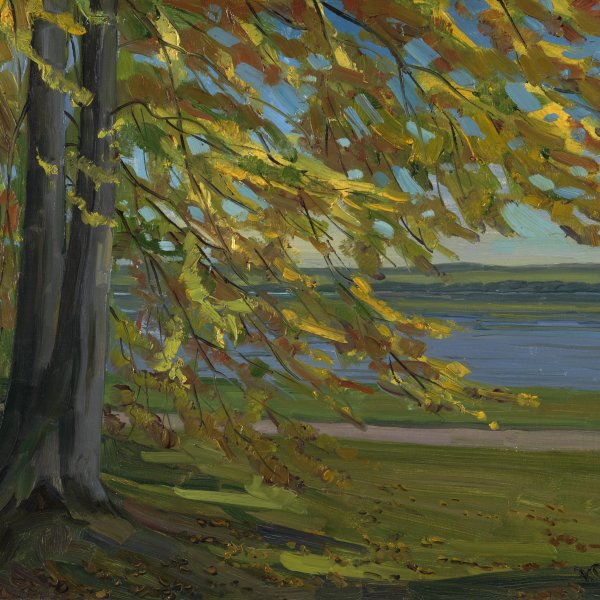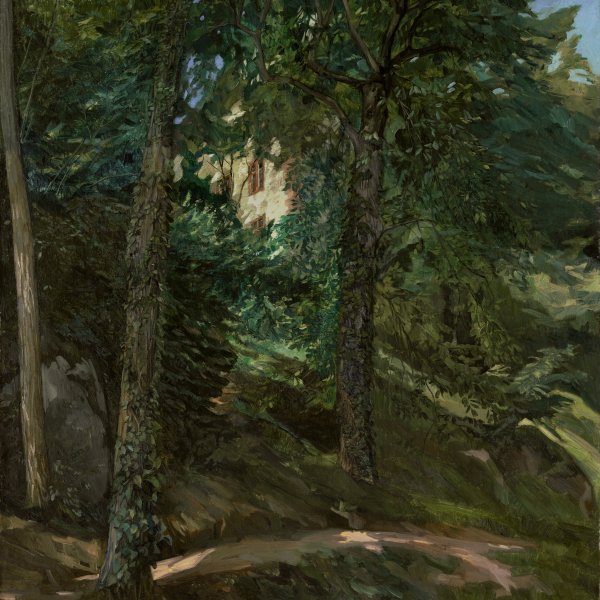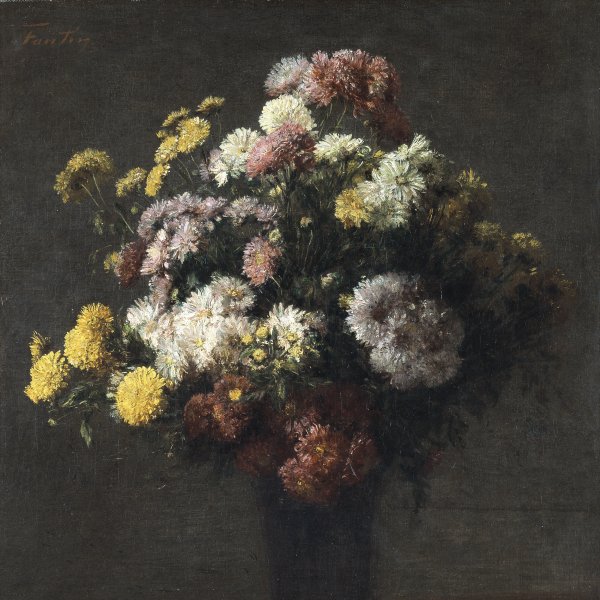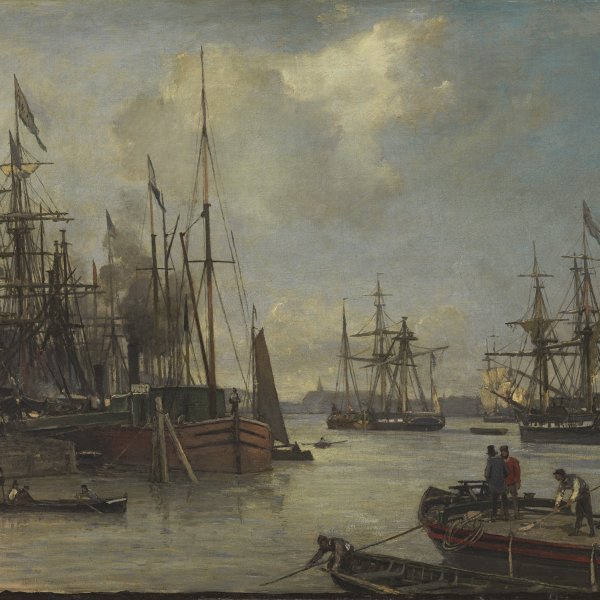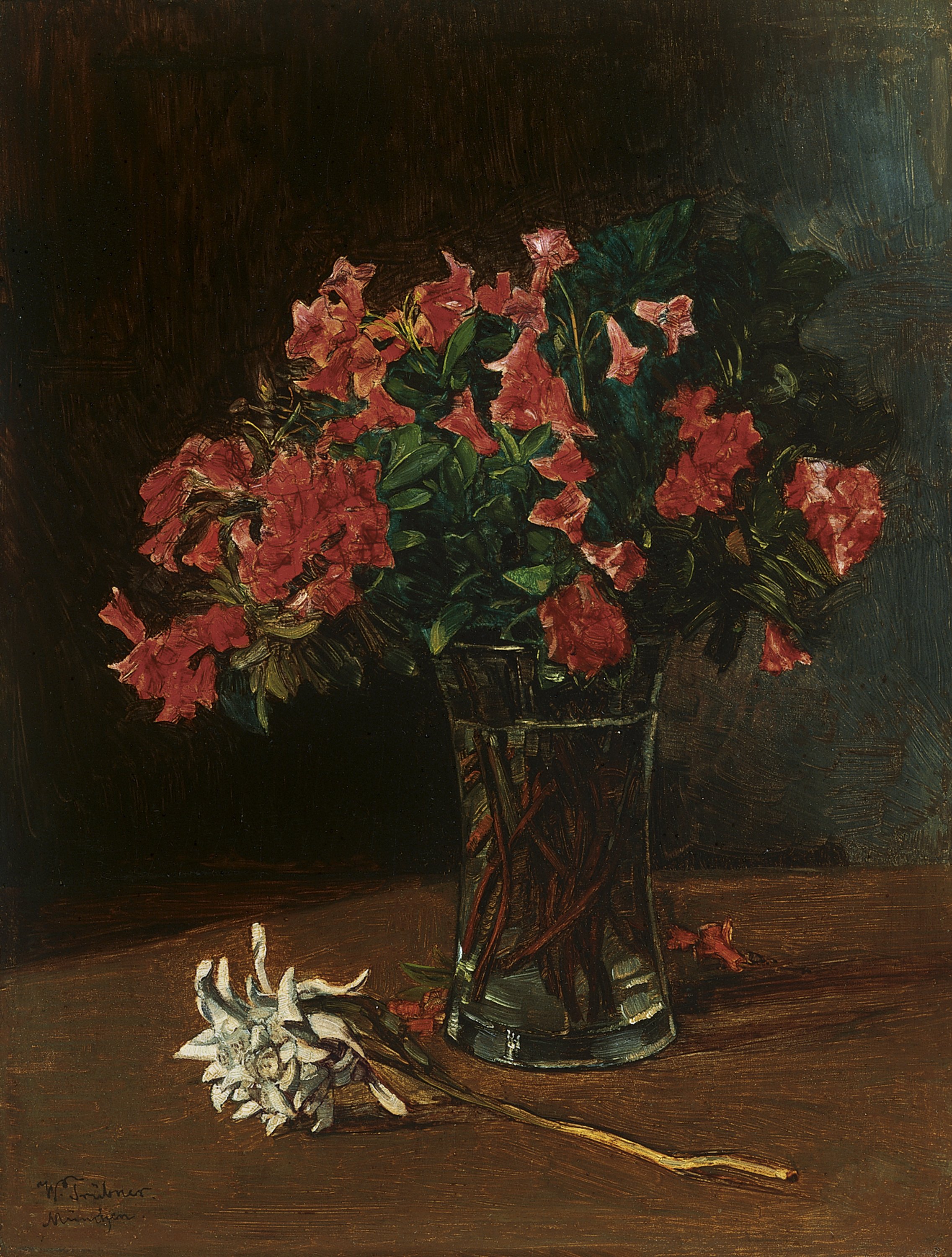Flower Vase
Wilhelm Trübner was associated with the realist movement that developed around the figure of Wilhelm Leibl in Munich in the 1870s. His use of colour and treatment of light, combined with an increasingly loose brushstroke, would subsequently bring him closer to the German Impressionists. Trübner is noted for his portraits, landscapes and still lifes, the latter including some spare, refined depictions of flowers.
The present vase of flowers, painted during the artist’s Munich period between 1874 and 1896, is an example of that type of work. A simple glass vase on which the light falls rests on a bare table in front of a dark background. The vase contains vivid red flowers whose stalks can be seen through the glass. On the table beside the vase lie a few petals with a fading white chrysanthemum in the foreground. This type of composition and the treatment of the chiaroscuro may have been inspired by the Dutch tradition of still-life painting with which Trübner was familiar.
CM
Wilhelm Trübner was very familiar with late Romantic art, but his artistic development was linked to the so-called German Naturalism. Although his sensitivity at capturing the colours and appropriate light value for each area of the painting reveals a conception of nature that is both Realist and Romantic, he does not attach the same importance to drawing as the Romantic artists, and his compositions are structured by direct application of colour to the picture surface. This concern with texture, tonality and chiaroscuro, and his interest in capturing light and atmospheric effects, attests to the influence of the Naturalist painter Wilhelm Leibl, whom Trübner met in Munich in 1871 and to whose circle, the Leibl-Kreis, he belonged.
Furthermore, the influence of seventeenth-century Dutch painting led Trübner to develop an interest in lesser themes in painting which, as we read in his text “Understanding art today, ” published in 1892, were as important to him as other motifs: “Any motif is interesting, and even the most insignificant is interesting enough to painting; because the simpler the object, the more interestingly and fully I can depict it from a pictorial and colourist’s perspective. It all depends on how I depict it and not on what I depict.”
This Flower Vase, which is undated, was painted in Munich, where the artist resided between 1874 and 1896. The brilliant colours with enamel-like properties and fondness for texture found in this painting — characteristics that define his entire output — have often been explained as a legacy of the goldsmith’s workshop where he grew up.
Paloma Alarcó





